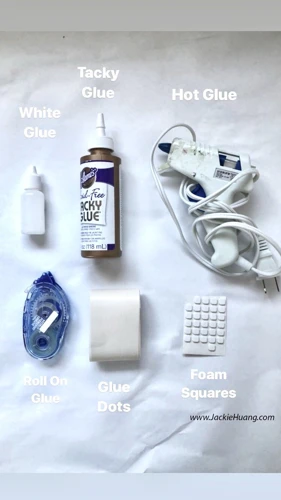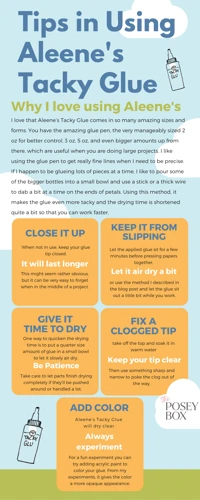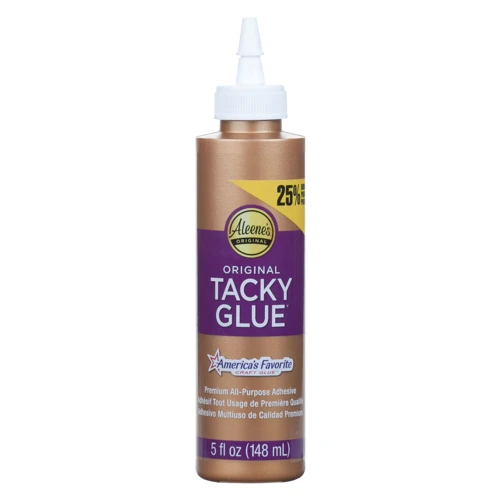When embarking on a DIY project or delving into the world of arts and crafts, having the right adhesive can make all the difference. Enter tacky glue, a versatile and reliable option for a myriad of creative ventures. But what is tacky glue? This blog post will explore the nature, properties, and applications of this handy adhesive, ensuring you make the most out of your crafting endeavors.
What Is Tacky Glue?
Tacky glue is a type of PVA (polyvinyl acetate) adhesive known for its thick consistency and quick grab, meaning it holds items in place almost immediately upon application. This fast-acting attribute makes it a favorite amongst hobbyists and professionals alike for its ability to bond a wide range of materials with precision and ease.
Properties of Tacky Glue
Understanding the properties of tacky glue is essential for utilizing it effectively. This section delineates its strength, clarity, water resistance, and composition.
How Strong Is Tacky Glue?
When it comes to adhesive strength, how strong is tacky glue? It is known for providing a robust, durable bond that suits various crafting needs. While it might not be the strongest glue available, its strength is more than sufficient for most paper, fabric, and lightweight wood projects.
Does Tacky Glue Dry Clear?
A common question regarding this adhesive is: does tacky glue dry clear? One of its appealing features is that it dries to a clear finish, making it an excellent choice for projects where the glue might be visible and a clean look is desirable.
Is Tacky Glue Waterproof?
Concerning water exposure, many wonder, is tacky glue waterproof? While it does have some level of water resistance, it is not fully waterproof. For projects that will be exposed to moisture, a different type of adhesive might be more appropriate.
Tacky Glue Ingredients
The primary tacky glue ingredients include PVA, which gives it its adhesive properties, and additives that enhance its tackiness and drying time. The exact formula may vary between brands, but these core components remain consistent.
Common Uses for Tacky Glue
Tacky glue can be used in a variety of applications, making it a staple in any crafter’s toolbox. Here’s how it can be applied across different materials.
Tacky Glue Uses
- Scrapbooking and paper crafts
- Embellishing with beads or sequins
- Adhering decorative trims
- Securing fabric appliqués
Can Tacky Glue Be Used on Fabric?
Many crafters ask, can tacky glue be used on fabric? The answer is yes. Its strong hold and flexibility once dry make it suitable for attaching embellishments to fabric or assembling fabric-based projects.
Is Tacky Glue Good for Wood?
When it comes to woodworking, is tacky glue good for wood? Tacky glue provides an adequate bond for light wood projects, but for anything requiring structural support, a wood-specific adhesive would be recommended.
Comparing Adhesives
Choosing the right adhesive can be a game-changer in crafting. Let’s compare tacky glue with another popular choice.
Tacky Glue vs Hot Glue
When debating tacky glue vs hot glue, consider the application. Hot glue sets rapidly and offers a strong bond for heavier materials, but tacky glue provides the advantage of a precise application without the risk of burns or the need for a glue gun.
Specific Products
Among the many adhesives available, some stand out for their reputation and performance.
Aleene’s Original Tacky Glue Dry Time
For those using Aleene’s brand, understanding Aleene’s original tacky glue dry time is crucial. It typically sets in about 35 minutes, with complete drying taking anywhere from a few hours to overnight, depending on the thickness of the application and humidity levels.
Tips and Tricks
Maximizing the potential of tacky glue involves mastering its application and care. Here are some helpful hints.
Application Techniques
To achieve the best results, apply a thin layer of glue and press the surfaces together firmly. For textured or porous materials, consider a slightly thicker application. Always clean the tip before capping to prevent clogs.
Maintenance and Storage
Proper maintenance and storage of tacky glue involve keeping it at room temperature and away from direct sunlight to maintain its consistency. Ensure the cap is tightly sealed to prevent drying out.
Conclusion
Tacky glue is a valuable tool for any craft enthusiast’s arsenal. Its versatility, ease of use, and strong bond make it suitable for a variety of creative applications.
If you’re diving into the world of adhesives, you might be curious about the different types of glue and their specific applications. For example, if you’re looking for information on sticky adhesives, you may find our article on What Is Tacky Glue quite helpful. But the world of glue doesn’t end there; we have other resources that can enhance your understanding. Discover the peculiar uses of butt glue and its unique properties. If you’re working on projects that require a strong bond, our article on PUR glue (Polyurethane Reactive Glue) might be just what you need. And for those challenging situations that involve oily surfaces, check out our insights on oily glue to see how you can achieve adhesion despite the presence of oils.
Summary of Tacky Glue Benefits
In summary, tacky glue is a reliable adhesive that dries clear, has a strong hold, and can be used on a multitude of surfaces. Whether you’re working with fabric, paper, or light wood, tacky glue can enhance your crafting projects with its dependable performance.





